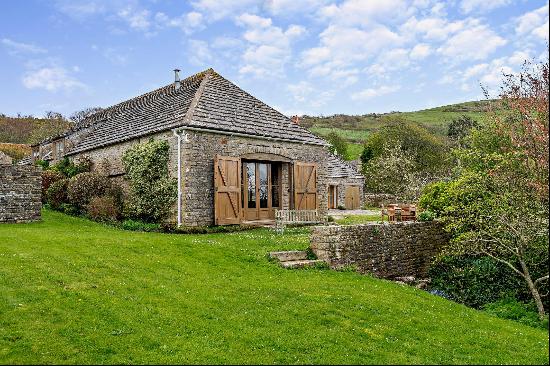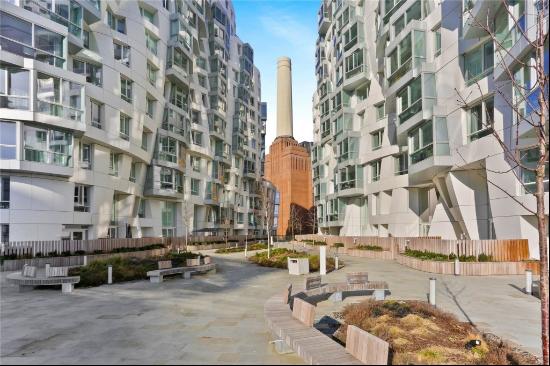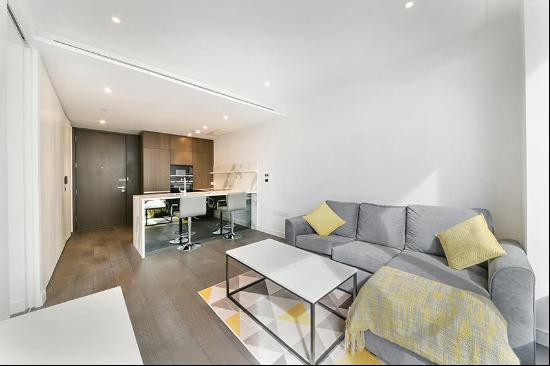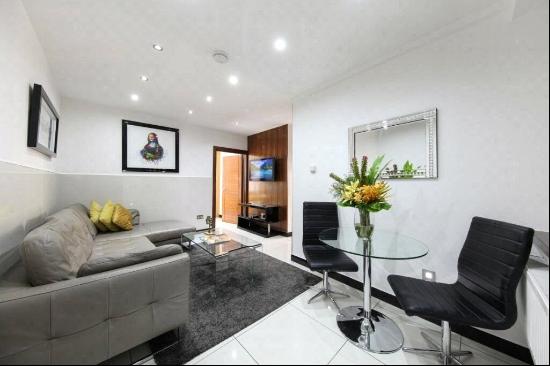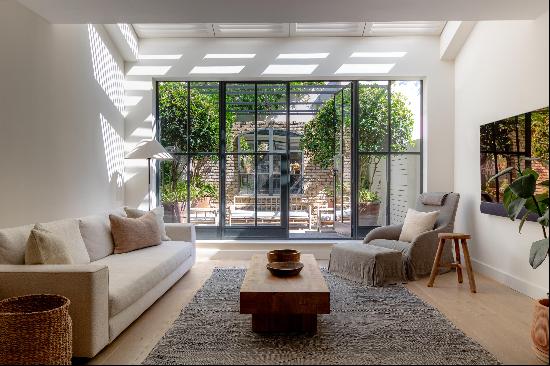
By Edwin Heathcote
It is widely believed that the Modernists were a fiercely committed bunch, a cohesive unit wedded to the minimal, the austere, the cosmopolitan, the technical and the socialist. But Oliver Hill, one of Britain’s most intriguing Modernist architects, was none of those things. Instead he was what architectural historian Alan Powers waspishly but perfectly described as a “style-monger”, able to turn his hand to the Tudor and Arts and Crafts as easily as the Modern or Neo-Georgian.
In 1937, when the Museum of Modern Art put on its show Modern Architecture in England, Hill’s work was prominent. And most prominent of all was Holthanger, a recently completed house with a theatrically sweeping, curved front.
That house, since rechristened Cherry Hill, is on the market for £30m, a rare opportunity to buy a gem of British Modernism set in the artificial landscape of golf that is Wentworth in Surrey.

Like so many Modernist houses, it has led an existence of charm and neglect. It began as a rare house commissioned by a wealthy single woman, Katherine Hannah Newton, but came into its own as a starry pad when bought in 1958 by the US ambassador to the UK, John Hay Whitney.
Whitney, himself from a wealthy family, established the house as a whirling society hub and the US ambassador’s country residence. It was convenient for both the golf (which both he and President Eisenhower enjoyed) and the horseracing at Ascot (which he attended with the likes of Prince Rainier, Princess Grace of Monaco, the Queen and Princess Margaret).
With Whitney having dipped his toe into the Hollywood waters as producer of the phenomenally successful Gone with the Wind, movie star friends would visit too. And as an art connoisseur he found the white walls amenable to hanging his eye-popping collection including works by Van Gogh, Renoir, Gauguin and Picasso.

Although it had become an informal diplomatic outpost, the house was owned by Whitney rather than the US government. After Whitney’s death in 1982 his widow Betsey sold the property and subsequent owners executed extensions, refurbishments and remodelling. Most recently, developers Tejit and Jess Bath spent four years remaking it as a Modernist extravaganza.
Although listed at Grade II, this is not the house of 1935. Certainly the front facade with its wonderful curve, looking as if designed for one of those running-boarded, chrome-accented limousines with sweeping fenders, is intact. So is the distinctive glazed staircase tower, housing the sculptural spiral stair with its sensuous wooden handrail (a rare material survivor from the 1930s), and the long, low profile. But almost everything else is new.
Standards of contemporary luxury in the 1930s and the 2020s are planets apart. As a result, new wings have been added to either side, a capacious basement dug beneath for a wine cellar and home cinema, and the four-acre garden re-landscaped.

In the 1930s, the luxury furniture was designed by Betty Joel, and fabrics and curtains by Marion Dorn, two of the most admired designers of the Modernist/Deco period in Britain. Those are long gone and the new interiors are inspired by Mies van der Rohe, the one-time Bauhaus director. It is not always a comfortable fit. Mies’s work exuded an austere precision; its luxury emerged from the materials and the space. At Cherry Hill the designers have tried to have it both ways: Mies’s materials (the heavy, veined marbles and lush-grained veneers) alongside the mod-cons.
Avanti Architects, a practice deeply experienced in restoring modernist architecture, has done a fine job of evoking the feel of a Neo-modernist masterpiece, but it remains a hybrid experience. From the spacious living room, with its curving walls of shelving and gilded recessed ceilings, to the refreshed sunroom, a circular glazed space positioned to catch the last rays, this is a much more contemporary version of luxury: globalised, made bigger and shinier, pushed far upmarket.
One of the main differences in houses conceived as luxury commodities 80 or so years apart is the bathrooms. In the 1930s these were austere affairs, small and few. In the 2020s they have grown and multiplied like rabbits. But the new his and her bathrooms on either side of the master bedroom are among the most enjoyable of the new spaces. The male version is enveloped in a chocolate brown marble, the female a zebra-striped panorama of cream and black heavily veined stone, which evokes some of the wilder excesses of interwar interiors.

But the star is a swimming pool that first appears as a parquet dance floor but, at the flick of a switch, descends to allow the water to bubble up from beneath.
Part of me wanted to see Cherry Hill as it might have appeared in 1935, a radical intervention into a faux-historic, picturesque setting. But we need to remember that Oliver Hill delighted in switching from one style to another, happy to pander to the changing tastes of his wealthy clients or the particularities of a setting.
To overlay Hill (1887-1968) with his contemporary Mies (1886-1969), one a dazzling chameleon the other a brilliant monomaniac, is a little odd but perhaps it works. It is exactly the kind of commodification of Modernism into a luxury product that Hill was engaged in almost a century ago. And luxurious it most certainly is.
Photography: Savills













